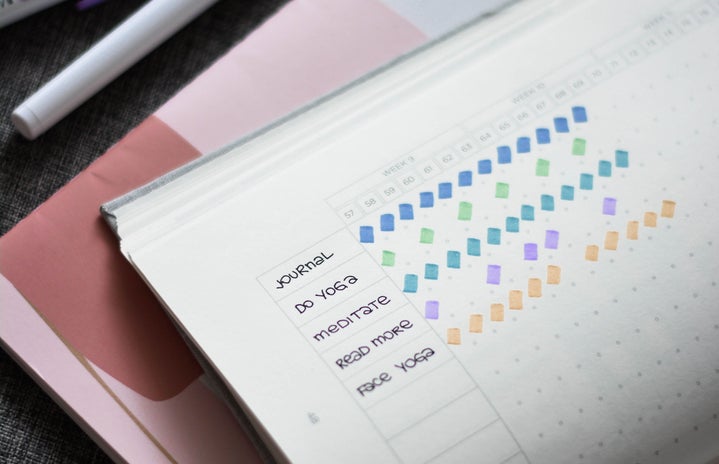To kick off my 2022 with a bang, I joined a book club offered by The Women’s Network UCSD to start my first book of the year: Atomic Habits by James Clear. Although I have not finished my reading yet, the first couple of chapters have been incredibly enlightening as it offers models of behavior and cognition to reshape our habits. “Atomic habits” refers to how our regular habits, routines, or practices , or as Clear interprets it, “a compound interest of self-improvement.” As I immerse myself in this insightful book, I keep notes on how to form good habits and better myself. Here are some of my key takeaways:
The 1% Rule
One can never succeed at something on their first try. Oftentimes it takes long periods of time, effort, and self-control to hone our practices and skills. The 1% percent alludes to marginal gains. If we can get one percent better at one thing for 365 days, mathematically we will be 37 times better by the end of the year. Our improvements can accumulate into something bigger and every little detail counts.
Make identity based habits
Our habits shape our identity, and vice versa. Our behaviors tend to be a reflection of our identity; in fact they are three layers of behavior change: outcomes (outer), processes (middle), and identity (inner). We struggle trying to form or maintain good habits–such as the challenges of New Year’s resolutions–because we focus on outcome-based habits rather than identity-based habits. Outcome-based habits are simply focusing on what you want to achieve (e.g. losing weight) while identity-based habits are aiming on who we wish to become (e.g. a healthy person).
The Four Laws of Behavior Change
Initiating change and action are based on a set of four simple rules that we can implement to form good habits:
- Make it obvious. Raise your awareness of your non-conscious habits to a more conscious level.
- Make it attractive. Prioritize the anticipation of a reward that gets us to take action.
- Make it easy. Reduce friction associated with good habits and increase friction associated with bad habits.
- Make it satisfying. As humans, we love immediate gratification. So, keep in mind that what is immediately rewarded is repeated.
Atomic Habits is the ultimate tool and resource to encourage self-reflection and transformation of habits.


